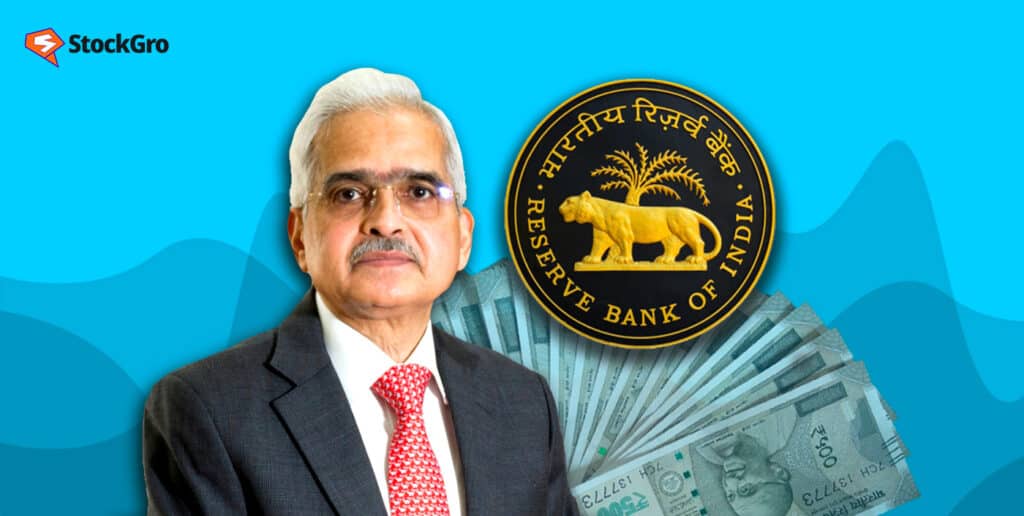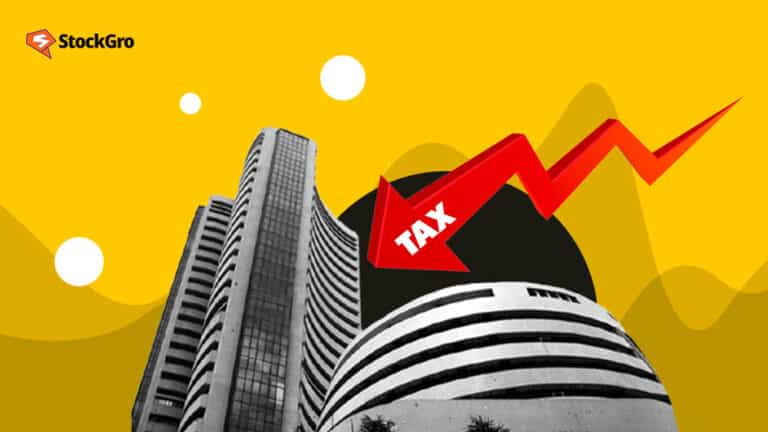
The Reserve Bank of India (RBI) recently announced its decisions after the Monetary Policy Committee (MPC) meeting on Thursday, 8th June 2023. As expected, the RBI’s MPC has chosen to keep the repo rate—the central bank’s key lending rate—unchanged at 6.5 per cent. It’s time to understand what this means for you as a COMMON MAN.
Every two months, the MPC of the RBI convenes to discuss interest rates and the country’s economic policies. People eagerly anticipate their decisions—will rates go up or down? In this meeting, the consensus was to keep rates steady.
This decision comes after the RBI hit the pause button on its rate hike cycle in the previous policy announcement.
Interest rates: The grease for the economy’s engine
Interest rates have a significant impact on the economy. They determine the availability of money and influence the pace of economic growth. Think of it as the grease or lubricant that keeps an engine running smoothly.
When interest rates rise, money becomes more expensive as the supply decreases. This leads to higher interest rates on loans, making borrowing more costly. Central banks typically increase rates to control inflation.
On the other hand, when interest rates are low, loans become cheaper, encouraging individuals and companies to invest in growth and expansion. Lower rates are especially beneficial for home loans, as they reduce EMIs, making it easier to buy homes.
You may also like: A closer look at India’s latest Q4 GDP data: Key takeaways
Impact on investments
Low-interest rates mean more money floating in the economy. This surplus often finds its way into the equity markets through institutional investors. As companies use this extra money for growth, the equity markets tend to rise.
Global institutional investors also find equity markets more attractive in a low-interest-rate environment, as other alternatives like bonds offer lower returns.
Individual portfolios benefit from this trend, as market players typically wish for rate cuts or a pause in rate hikes. So, the next time you see markets going up due to a rate cut, you’ll know why.
What’s the big picture?
The RBI governor emphasised that India’s economy remains resilient, with a projected GDP growth rate of 6.5%. However, inflation is expected to remain on the higher side. The RBI’s primary goal is to manage inflation while promoting growth and ensuring financial system stability.
| RBI keeps the repo rate unchanged amid lowering inflation | ||
| Country | Interest rate % (April 2023) | Inflation rate % (April 2023) |
| India | 6.5 | 4.7 |
| U.S. | 5.1 | 4.9 |
| U.K. | 4.5 | 8.7 |
| E.U. | 3.8 | 7 |
| China | 3.65 | 0.1 |
| Japan | -0.1 | 3.5 |
Growth optimism vs. Rural realities
While the monetary policy statement radiates optimism about growth, let’s take a closer look. This positivity stems from the impressive performance of urban demand indicators like four-wheeler sales, air passenger traffic, and consumer credit.
But here’s the catch: rural demand has been sluggish. Poor sales of two-wheelers and tractors, along with depressed rural wages and job growth, paint a different picture. The RBI’s rate pause, along with liquidity tightening, aims to prevent lending rates from dipping further.
Inflation trends: Taking a breather
Inflation, the sneaky enemy of our wallets, has shown signs of retreat. Consumer price index (CPI) inflation dropped to a 15-month low of 5.7 per cent in March and an 18-month low of 4.7 per cent in April. This news probably made the RBI smile a bit. After all, the rate hikes they’ve implemented over the past year seem to yield results. Patience pays off!
- RBI’s dilemma
Inflation seems to be on the rise. The RBI has projected a CPI inflation of 5.1 per cent for 2023-24. But here’s the twist: the quarterly projections indicate that prices will rise, especially as the advantage of a low base wears off (it means that the inflation rate might shoot up even more than anticipated). So, what does this mean for the RBI’s repo rate?
Typically, when inflation strays from the 4 per cent target, we expect the rate to rise. However, the RBI has been closely monitoring the economy’s growth needs since the Covid-19 pandemic hit.
| Rbi’s repo rate hikes since May 2022 | |
| Months | Repo rate % |
| May 2022 | 4.40% |
| 8 Jun 2022 | 4.90% |
| 5 Aug 2022 | 5.40% |
| 30 Sep 2022 | 5.90% |
| 7 Dec 2022 | 6.25% |
| 8 Feb 2023 | 6.50% |
| 6 Apr 2023 | 6.50% |
| 8 Jun 2023 | 6.50% |
Roadblocks ahead: Liquidity surplus and monsoon woes
Now, here’s where things get interesting. The banking system is swimming in liquidity, with over Rs 1.75 trillion as of end-May. Government spending and foreign portfolio investments have contributed to this surplus. While it’s great for banks to have extra dough, it poses a challenge for the RBI. With banks happily lending away, the RBI’s efforts to tighten monetary policy and curb inflation face a roadblock.
The withdrawal of Rs 2000 currency notes has led to fresh bank deposits of Rs 1.5 trillion. And guess what? This deposit surge can trigger higher credit growth, fueling the inflation fire. Yikes! The RBI needs to stay on its toes and take preemptive action.
Adding to the mix is the Monsoon. While the RBI’s forecasts predict a 5.1% inflation and 6.5% growth, they keep a close eye on the impact of the monsoon. The rainfall’s progress and spread will provide crucial insights by the next review in August. Uncertainties surrounding the monsoon and the possibility of El Nino are at the forefront of the RBI’s mind.
Also Read: What is the reason behind the fall of over 5% in Indian IT stocks?
The RBI’s strategies: Preparing for challenges
In the recent policy announcement, the RBI indicated its intention to continue withdrawing accommodation, meaning it will persist in using the reverse repo rate to absorb excess funds. This signals a slightly hawkish stance, suggesting a focus on curbing inflation.
As for the uncertainties related to the Monsoon, we’ll have to wait and see how they impact the overall inflation outlook. Weather patterns and crop yields can influence food prices, which, in turn, affect inflation levels. Time will reveal the extent of these effects and how the RBI adapts its policies accordingly.
Additional measures: Digital superpower moves
Apart from the interest rate decision, the RBI announced a series of additional measures that enhance India’s position as a digital superpower. Let’s take a quick look at these:
FLDG Arrangement: First Loan Default Guarantee:
- In simple terms, FLDG is a game-changer in lending. Fintechs step in to compensate banks and NBFCs if borrowers default on loans.
- This enables financial institutions to serve a broader population without traditional KYC or credit history.
- It’s a win-win situation where fintech guarantees a portion of the loan loss, ensuring high-quality sourcing and sharing the risk with lenders.
- The RBI’s revival of FLDG comes with important conditions, ensuring responsible lending practices.
- The FLDG default cover is capped at 5%.
- Banks and NBFCs must invoke the guarantee within 120 days of the loan going overdue.
RuPay Forex Cards:
- RuPay, India’s homegrown card payment network, is ready to take on the world!
- The RBI has given the green light for the issuance and use of RuPay Forex Cards for overseas transactions.
- That means when you travel abroad, you can use your RuPay card just like a pro, whether at ATMs, Point of Sale (PoS) machines, or online merchants.
- It’s a giant leap towards making RuPay internationally recognised and a source of national pride!
Also Read: Why IRCTC shares plummeted 3% after Q4 Results
e-RUPI Vouchers:
- e-RUPI is a QR code voucher or SMS that carries a unique code. It ensures government benefits reach the intended recipients, revolutionising last-mile delivery.
- The RBI has expanded the scope of e-RUPI to make it even more accessible. Non-bank prepaid payment instrument (PPI) holders can now issue these e-RUPI vouchers. PPI holders are basically entities that offer prepaid payment services like mobile wallets or payment apps.
- So, whether it’s food assistance, healthcare support, or any other government benefit, e-RUPI ensures that it goes directly to the people who are meant to receive it.
Bharat Bill Payment System (BBPS):
- Bill payments just got a whole lot easier with the BBPS.
- This one-stop payment solution allows you to pay all your bills in one place, saving you time and effort.
- From electricity and gas bills to water payments, mobile recharges, insurance premiums, mutual funds, credit cards, and even Fastag recharges, BBPS has got you covered.
Keep an eye on the RBI’s next move. In the meantime, let’s hope the Monsoon plays nice and inflation stays in check. It’s all part of the RBI’s quest to safeguard our wallets.

![What is CAGR and how to calculate? [ Explained]](https://www.stockgro.club/blogs/wp-content/uploads/2023/06/what-is-cagr-in-share-market-768x387.png)